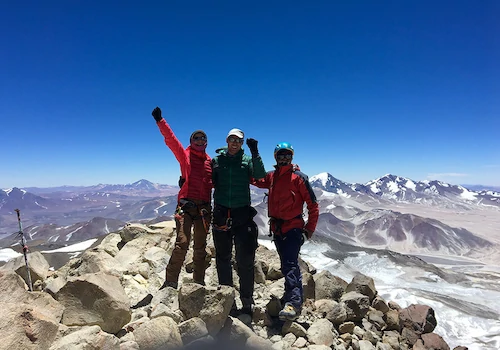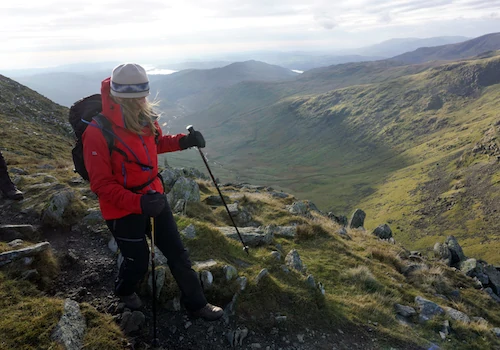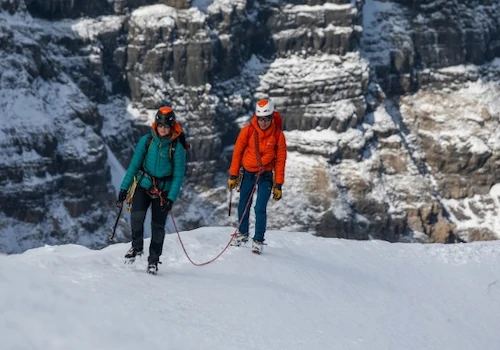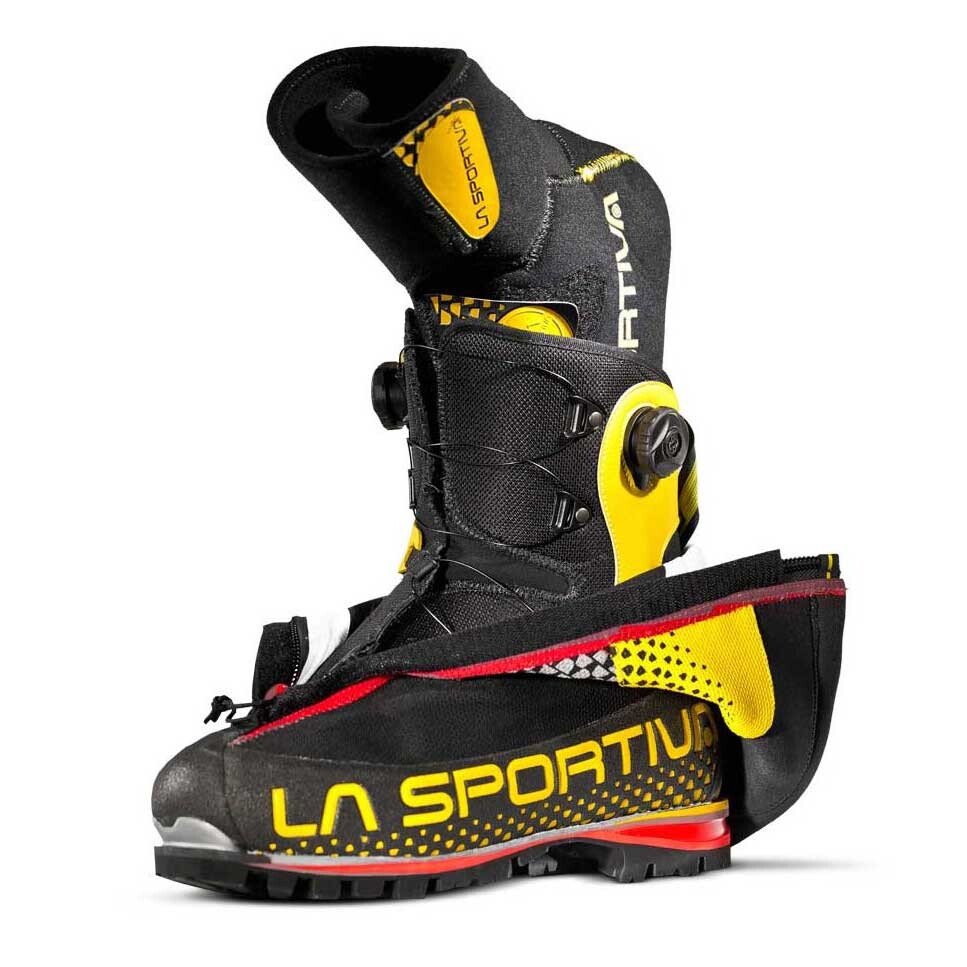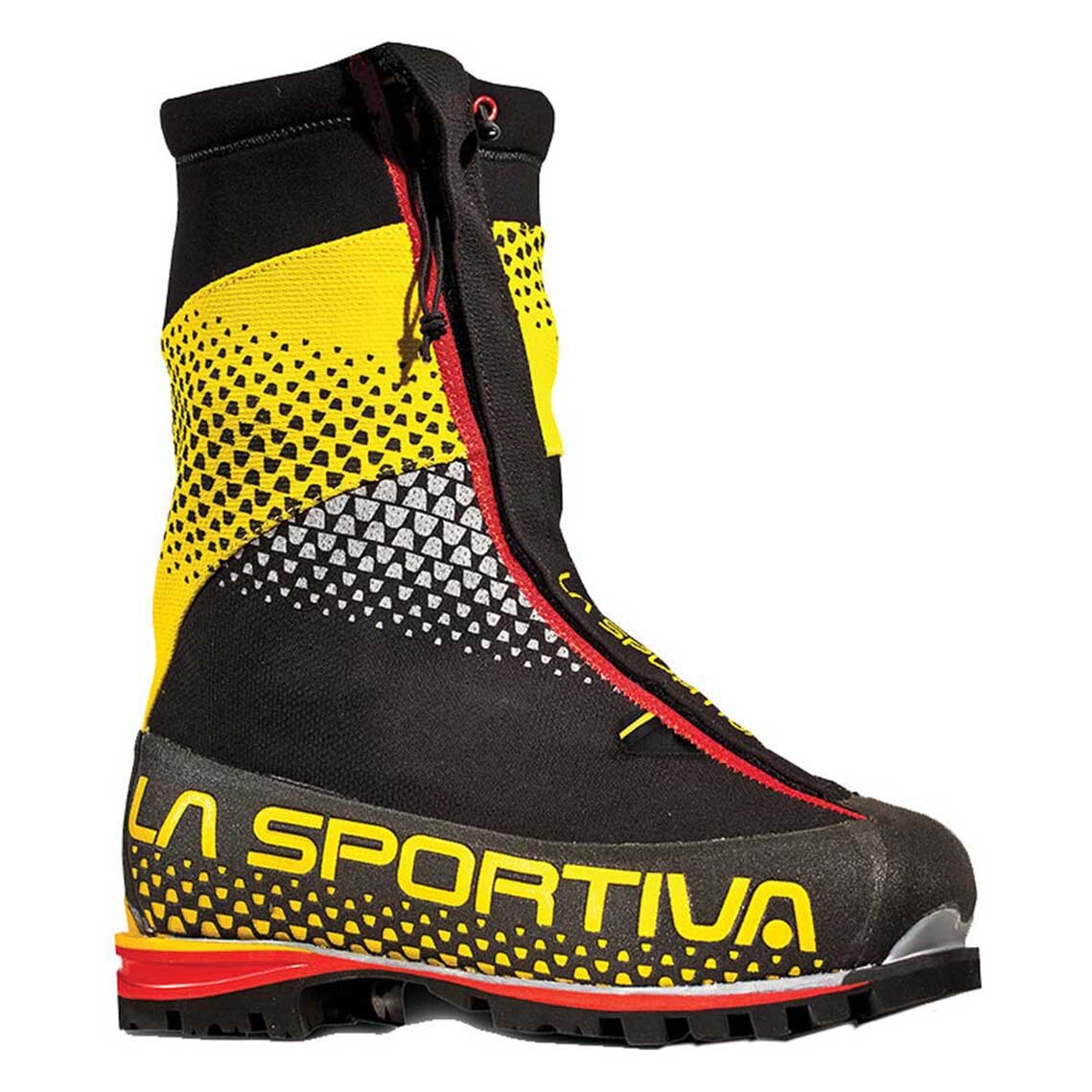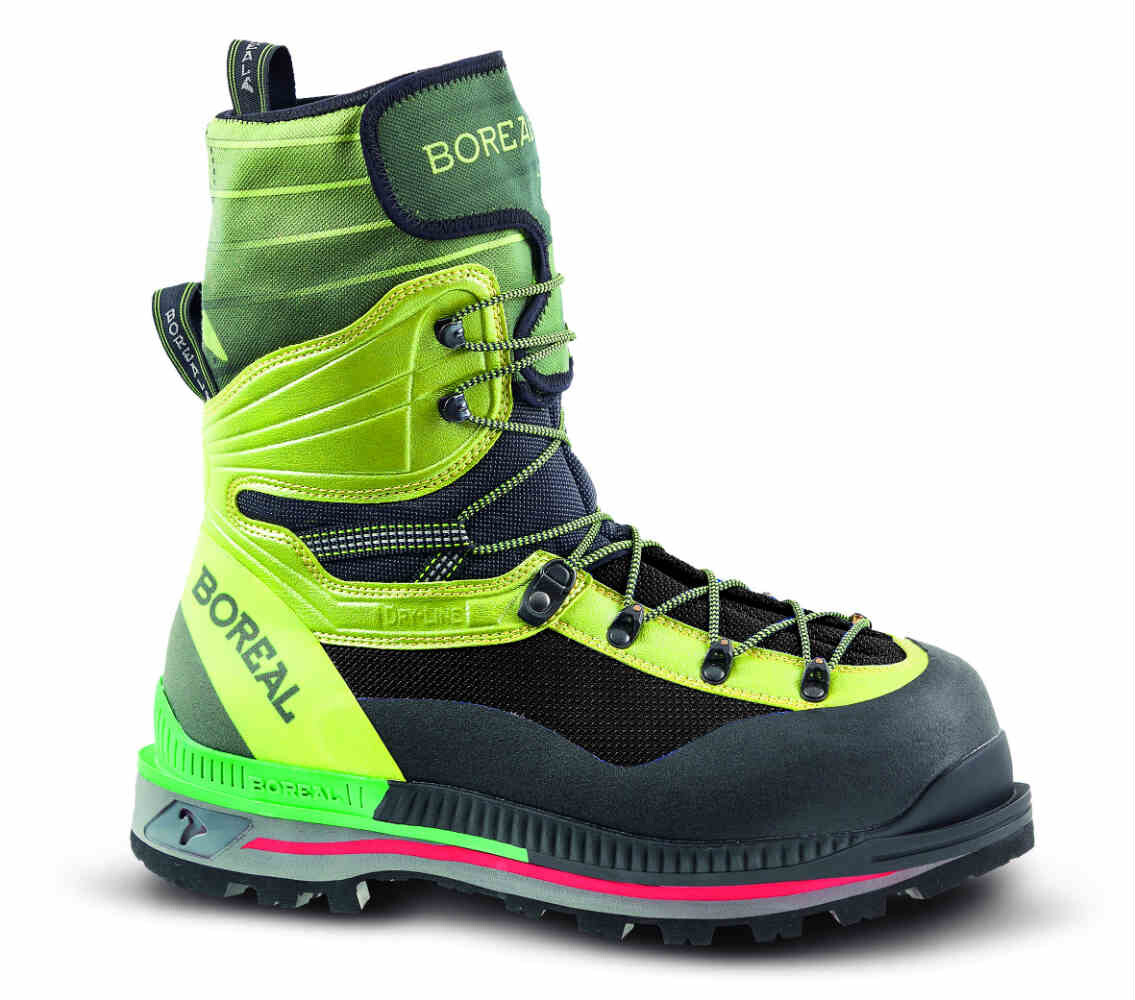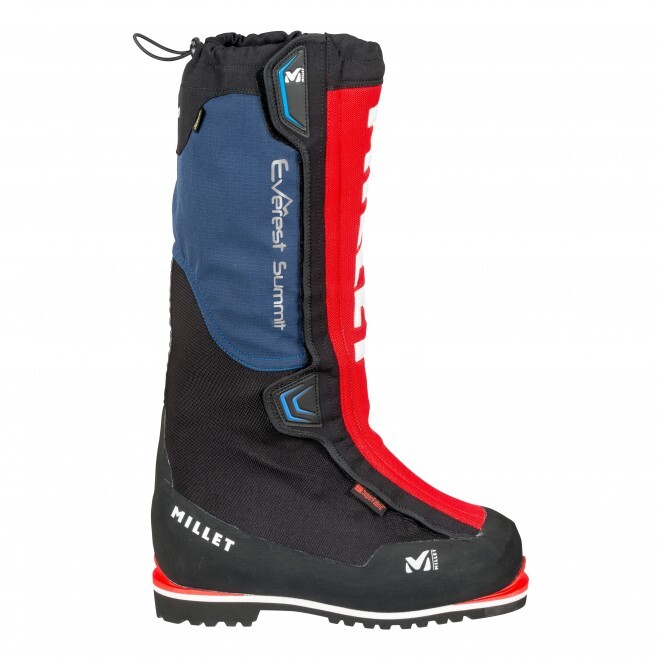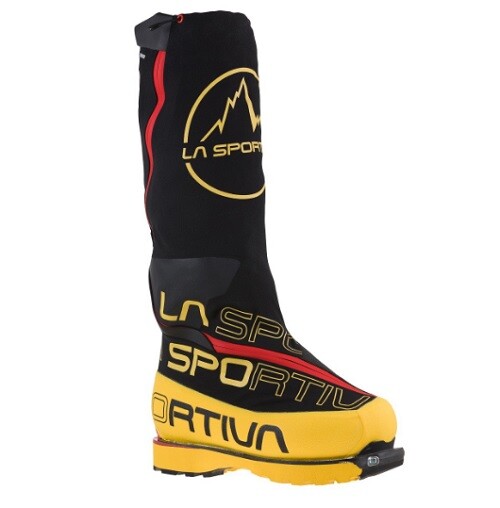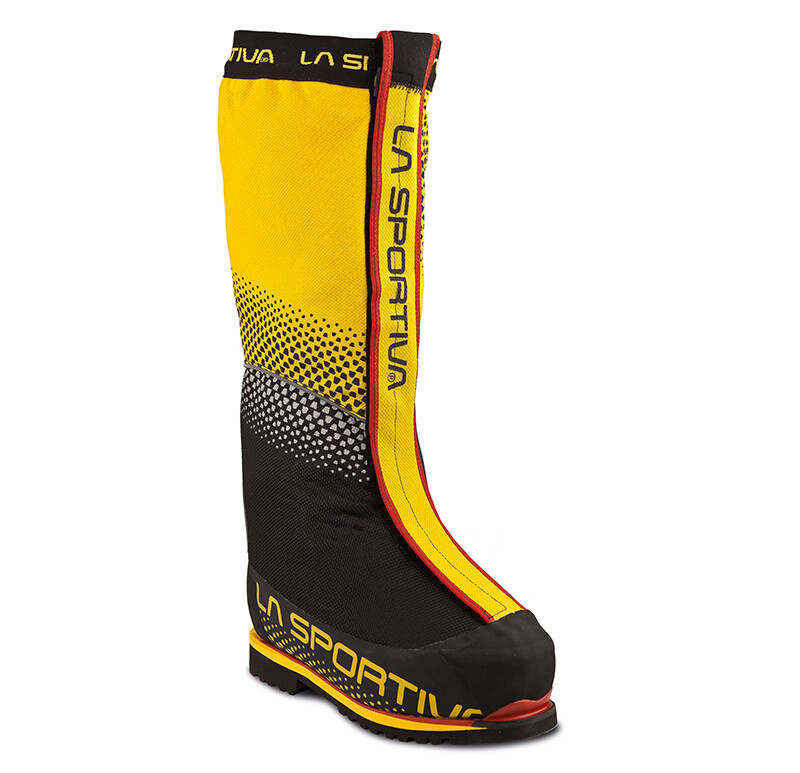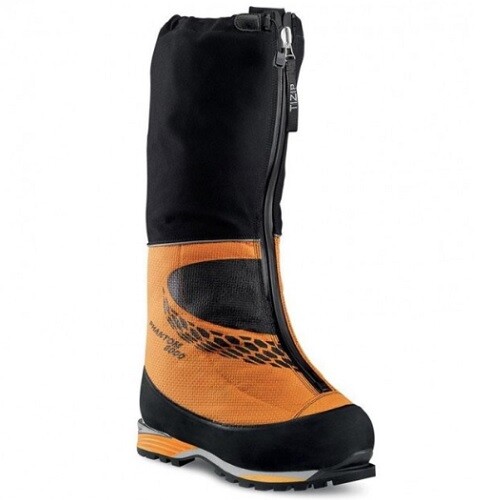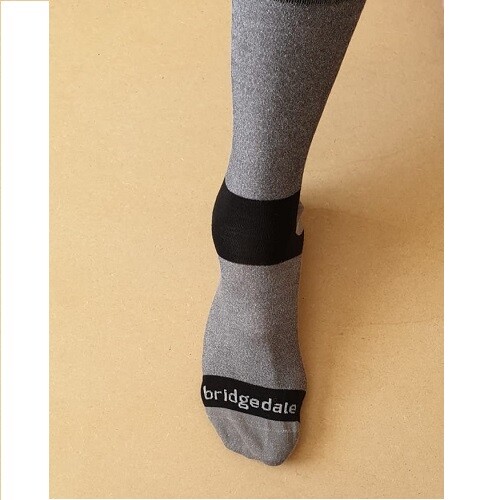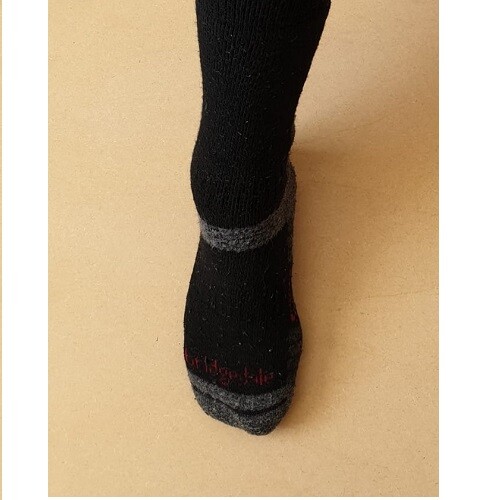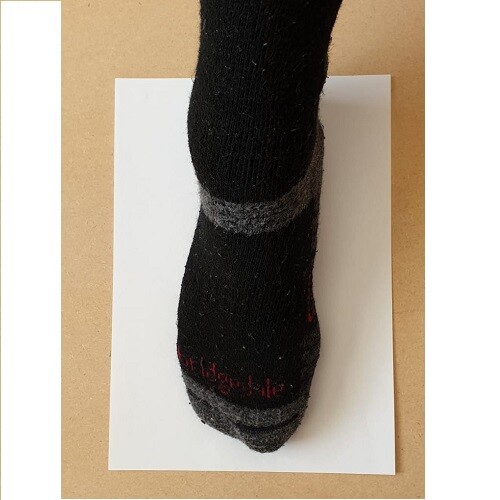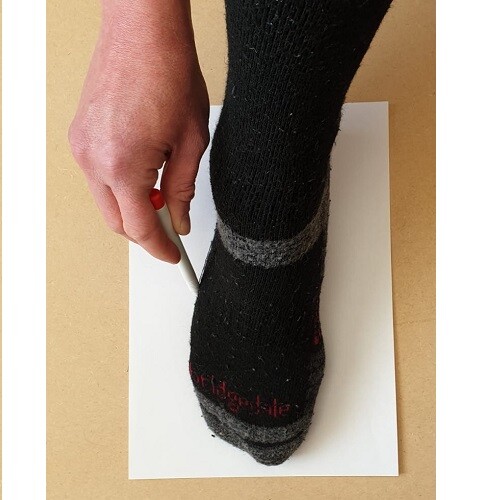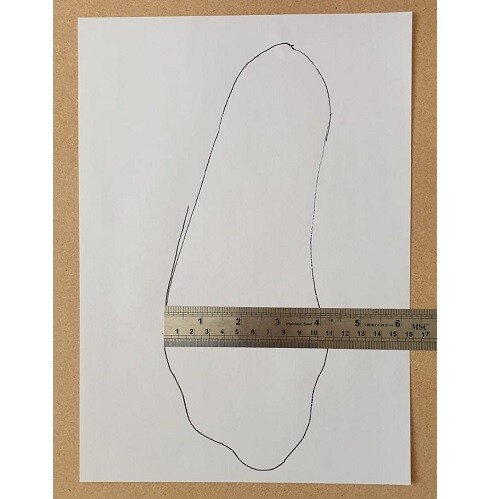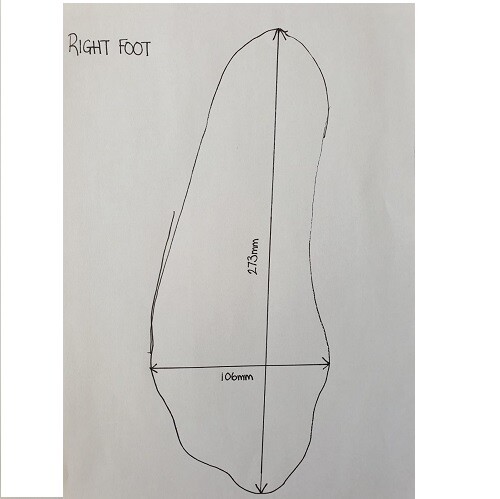Mountaineering Boots for Peaks up to 7000m – Double Boots
A Double Boot consists of an inner thermal boot that fits around your foot and is either laced up or tightened around your foot with a modern BOA system. It is then inserted into the outer boot consisting of the sole unit and gaiter. These boots are used on extended high-altitude mountaineering expeditions on glaciated peaks for additional warmth. The inner can easily be taken out to dry at night within your sleeping bag or in the sun during rest days!
The Sportiva G2 is the lightest, warmest and most sophisticated with a very efficient BOA system that allows the boots to tighten snuggly around your foot, but at a premium price. The Boreal G1 is a heavier and more basic boot but is very good value for money and forms the backbone of our hire stock, this boot requires a gaiter. The Mammut Norwand falls between the two and is the widest fit.
There are no specific women’s fit 7000 metre boots.
Adventure Peaks stocks the widest range of High-Altitude boots anywhere in the UK, we are the only place you can try on multiple types of double and triple boots and compare the fit under one roof. We are the altitude experts!
Here are the options for a mountaineering boot for 7000m…

